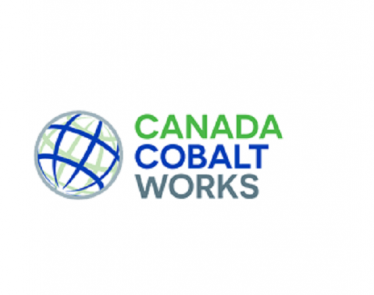If you think lithium is big, think again. There is a new commodity that is set to rise higher than any metal in the current market as demand for it spikes high and the already-tight supply bound to get even tighter.
Analysts at Macquarie Research expects a deficit of 885 tonnes next year for this metal, a 3,205 tonne deficit in 2019, and by 2020, a 5,340 tonne deficit. In other words, deficit is projected to increase by 503% — meaning an amazing opportunity for investors who can get their hands on this metal now.
The new hot commodity is cobalt — a metal with a variety of uses but most known for its presence in lithium-ion batteries — and the effects of supply deficit concerns are now beginning to show. Hedge funds are now hoarding physical cobalt. Financial companies such as Swiss-based Pala Investments (traded privately) and China-based Shanghai Chaos (private company) have stockpiled about 17% of last year’s global supply of cobalt.
Cobalt is currently one of the most essential parts in the global shift from traditional automobiles to electric vehicles. This is because the metal makes up about 35% of the lithium-ion battery mix — and lithium-ion batteries are what is mainly used to charge electric vehicles.
Thanks to the rising popularity of electric cars, many battery gigafactories are currently under construction to produce lithium-ion batteries. As such, the cobalt supply is getting quite strained — especially since 60% of the global cobalt supply is produced unethically in the Democratic Republic of Congo (DRC). The country uses child labour in its mines; as well, many of the workers there faces unsafe working conditions.
Many junior mining companies are now stepping up the plate to find a safer, more reliable source of cobalt — Scientific Metals being one of them. The mining company is currently starting a project that could make the U.S. a producer of cobalt for the first time in history. If successful, it would be the 5th home run for the company — its last thrilling success being a lithium project.
With more companies pulling away from the DRC and looking for other cobalt sources, it may be incredibly beneficial for investors to keep an eye out for junior mining companies like Scientific Metals. Below are some reasons why.
1. Already Experiencing Shortages
While lithium has been basking in all the attention from investors and producers alike, cobalt is just as — if not more — important than lithium. By weight, a lithium-ion battery make use of more cobalt than lithium. As such, it is now cobalt’s turn to bask in attention, especially since there is more unstable supply and rising demand.
Already, cobalt is starting to experience a shortage. Not only that, the annual demand growth is projected to be 20% largely due to the sudden popularity of electric vehicles. Tesla’s (NASDAQ:$TSLA) market cap of $50 billion alone is enough to illustrate this fact. In January, the company launched a $5-billion gigafactory in Nevada to produce its lithium-ion batteries, and is planning to construct more gigafactories. By 2018, the company hopes to produce more batteries than the rest of the world.
In Europe alone, sales for electric and/or hybrid vehicles have risen by 36%, according to the European Automobile Manufacturers’ Association. “The electric vehicle revolution is happening and its impact is likely to be felt faster than expected,” mining company Glencore (LON:$GLEN) CEO Ivan Glasenberg told investors at a conference.

With the success of electric car-makers such as Tesla and BYD (SHE:$002594), major automobile companies such as Volkswagen (ETR:$VOW3), BMW (ETR:$BMW), Toyota (TYO:$7203), Daimler AG (ETR:$DAI), and others are following suit — redirecting their focus on electric vehicles. In particular, Volkswagen have increased its funding to develop alternative engines to 9 billion euros over the next five years, while Daimler funded 10 billion euros to its own research.
Unlike Tesla and BVD, many of the automobile producers don’t produce batteries, instead sourcing them from companies like Samsung (KRX:$005930), LG Chem (KRX:$051910), and Panasonic (TYO:$6752).
Whether the vehicle-makers produce the batteries for their electric and/or hybrid vehicles themselves or source them from other companies, one problem remains: there isn’t enough cobalt for everyone.The battery industry currently make up about 42% of the application of the world’s cobalt supply, while the remaining 58% is used in industrial and military applications. Cobalt is essential in these industries — as a result, many of the companies are competing for supply, some more willing than others to pay higher prices for the metal.
Still, the electric vehicle industry continues to grow. Last year, production of electric vehicles grew by 41% and sales have increased 60% year on year. From 2011-2016, the electric vehicles market experienced a compound annual growth rate of over 72%. Analysts projects an additional 25-26% growth in this year alone.
The cobalt supply chain is too weak to sustain the current demand — and with western companies trying to find more ethical sources for the metal, any junior mining companies have a chance at striking it big with exploration for pure cobalt mines. Scientific Metals hopes to be one of the firsts to do so.
2. Investors are Already Beginning to Hoard Cobalt
As speculations of supply shortages start to become a reality, many hedge funds and investors are stockpiling physical cobalt in anticipation of an increase in the metal’s price. As a result, in late February — after a group of hedge funds acquired a huge stockpile of cobalt — Tesla and other battery suppliers for electric vehicles producers were scrambling to secure new cobalt shipments, according to the Financial Times.
In particular, Pala Investments and Shanghai Chaos have acquired about 6,000 tonnes of cobalt in a stockpile. That is worth more than $300 million of cobalt, based on today’s prices. Traders, investors, and hedge funds alike are buying the physical metal rather than stocks or futures because many believe that this is the most efficient way to gain the right exposure to the cobalt price, said one trader to the Financial Times.
Looking at the numbers, it is not surprising that so many people are hoarding cobalt. Since November of last year, cobalt prices have increased more than 50%, and is set to rise even more.

For 24 weeks straight, cobalt prices were gaining. With investors stockpiling the metal, it puts junior miners like Scientific Metals at an advantage as it gives more reason for companies to search for a secure supply of cobalt.
3. Scientific Metals is Making Smart Acquisitions
Just recently, Scientific Metals bought Iron Creek, a property located right in the middle of the Idaho Cobalt Belt.
The Iron Creek property is known for a large amount of explorations — including a 30,000 feet of diamond drilling — as well as a large resource of 1.3 million tons grading 0.59% of cobalt. At the property, Scientific Metals hope to explore, develop, and eventually have a cobalt mine in production.

The acquisition of the Iron Creek property is an amazingly strategic move on Scientific Metals’ part, as safe and ethical cobalt sources is currently almost non-existent. As a result, Scientific Metals can be one of the first companies to put the U.S. on the map for cobalt production. In addition, if the project becomes a success it could be one of the only two pure cobalt mines in the U.S — an extreme advantage as production won’t have to depend on nickel or copper demand.
As more major companies like Apple (NASDAQ:$AAPL), LG Chem, Samsung, and more experience public scrutiny for sourcing unethical cobalt, miners like Scientific Metals have a great potential to rise even quicker with more investments.
4. Impressive Management
Whatever company it is, the chances of success is always greater when you have good management. Such is the case for Scientific Metals, as the company’s CEO is Wayne Tisdale has made about $2.7 billion with his Intrepid Financial team. Even more impressively, Tisdale made the revenue by building and financing 5 different companies in different industries. The companies were:
- Rainy River (gold), worth $1.2 billion at peak price
- Xemplar (uranium, worth $1 billion at peak price
- Ryland Oil (oil and gas), was sold at $114 million
- Webtech Wireless (tech), worth $300 million at peak price
- Pure Energy (lithium), worth $65 million and counting
Tisdale’s move with Pure Energy was incredibly strategic on his part — the company started when lithium was only worth $5,000 per tonne in 2012. Since then, the price for the metal has risen by 450%.
As illustrated by his success with lithium, Tisdale’s main strategy is to find industry trends and participate early with acquisitions, development, and finance for the right assets. Then, once everything is secured, implement world-class management to help bring the business to great success. So far, Tisdale has gotten good results — it is most likely that cobalt will see the same results as Tisdale’s previous five businesses.
5. Secured Financing and Ready to Redefine the Cobalt Industry
Scientific Metals have strategically set itself up to be one of the key companies for cobalt production thanks to its acquisition of the Iron Creek property. Besides Iron Creek, the company is also looking for other ways to expand, preparing itself to play a large part in the world’s shift from fossil fuels and oil to cleaner sources of energy.
Tisdale and his finance team hold a 35% ownership in Scientific Metals and have gotten $3.5 million to finance its projects. Already, full finance has been secured for the company’s exploration program for the year. Additionally, the company hopes to prove up to 10 million tonne of cobalt resource this year — with the rising prices, this could be worth $1 billion.
Summary
It seems that Scientific Metals — with its smart acquisitions and strategic management — can very much rise to the top by advancing its projects to production and supplying cobalt to major companies. With growing number of investors stockpiling the metal and companies under pressure to source cobalt from ethical miners, the junior mining company is sure to earn some big revenues.
If you thought lithium investments were exciting, cobalt investments is sure to pump up any investors and traders out there. Look into junior companies like Scientific Metals for the potential of high rewards.
Featured Image: twitter









